How many cheeses start with F? You’d be surprised. Feta and fontina come to mind. You might stretch that list to include fresh mozzarella, but there are dozens more. There are more than 70 types of cheese starting with F.
Many are named after the specific region where they’re produced or by the cheesemaker’s company, but others just don’t get as much attention. We think that’s a shame. We’re here to help you find new favorites. Explore the top 10 F-named cheeses that are worth finding.
Farmhouse Cheddar
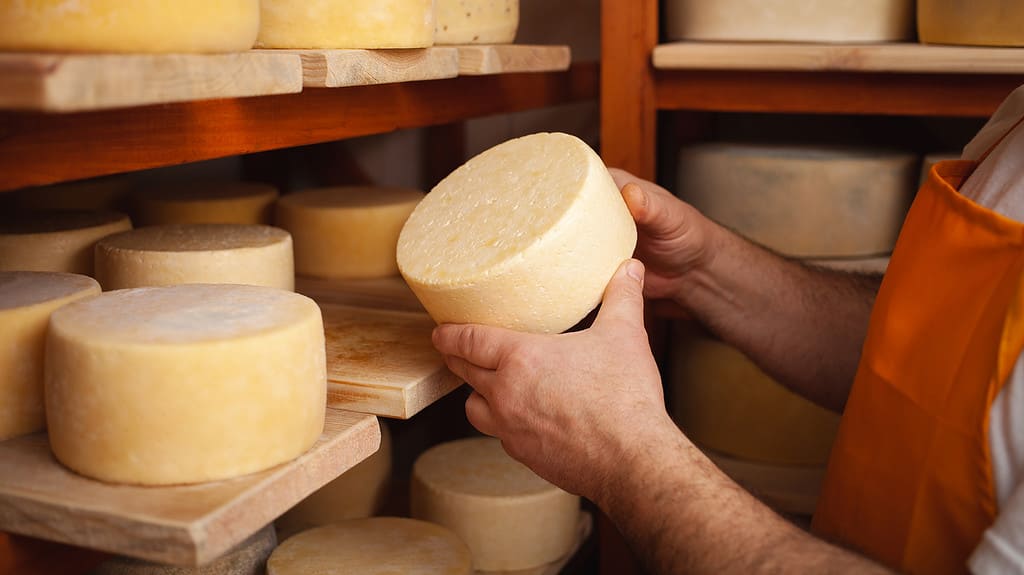
Farmhouse cheddar is a crumblier form of cheddar that only needs to age for a month before eating.
©Valeriia Titarenko/iStock via Getty Images
With a farmhouse cheddar, cultures combine with full-fat cow’s milk mixes with cultures and sit for an hour. The addition of rennet curdles the milk, which forms the cheese curds that are slowly heated for half an hour. Before you wrap the curds in cheesecloth and hang them over a basin to drain, mix in salt.
Drained cheese curds are put in molds, compressed, flipped over, and compressed more for about a day. The dried cheese rounds dry on shelves for a week to form the rind. A wax coating seals the cheese for the month that it dries on a rack.
Farmer’s Cheese

Farmer’s cheese is easy to make at home and requires just a handful of ingredients.
©ablokhin/iStock via Getty Images
Records show some of the earliest versions of farmer’s cheese were made in Germany, though the exact history of this cheese is unknown. While drier than cottage cheese, farmer’s cheese is similar in looks and flavor. It’s made with pasteurized milk, vinegar, and salt.
To make farmer’s cheese, slowly bring pasteurized milk to 190º F. Remove it from the heat, add the distilled white vinegar, and let that sit until curds form. Move that to cheesecloth and let it drain before you mix in some salt and shape the cheese into a roll or mound. Wrap this in more cheesecloth. Store farmer’s cheese in the refrigerator.
Feta
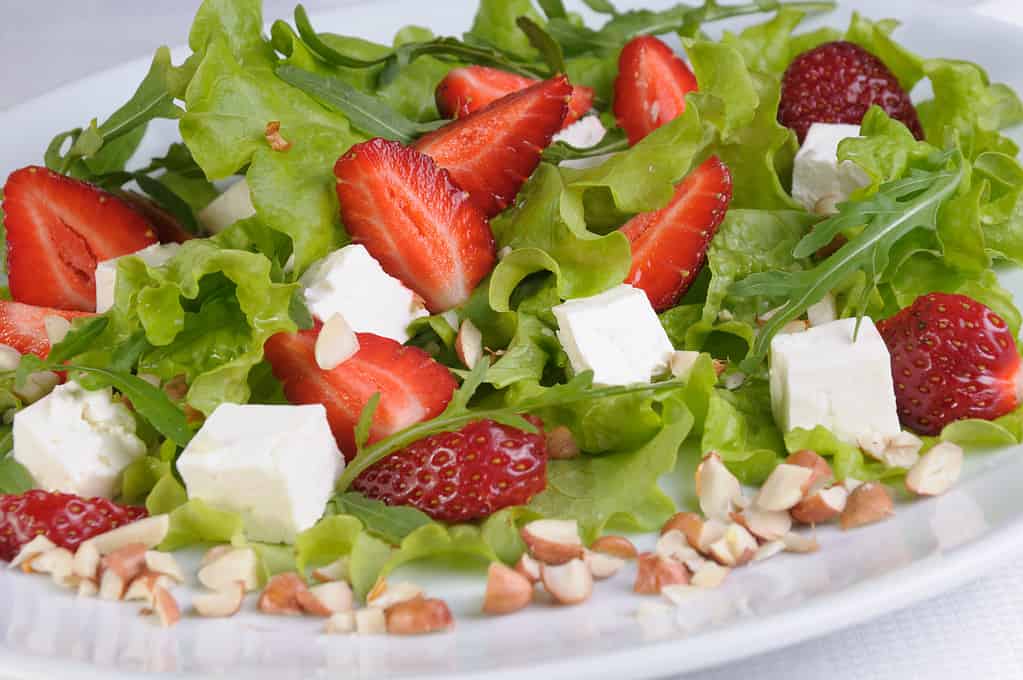
Feta is a familiar cheese as it’s a key ingredient in salads.
©MarynaVoronova/ via Getty Images
Salty, tangy feta cheese is one of the best-known F-named cheeses, and it’s a staple in a Greek salad. This isn’t surprising as Greece is where it originated. The milk of goat, sheep, or a mix of the two creates this cheese.
Though many countries make feta, traditional Greek feta has specific requirements, and these rules are set by the European Commission. It must made with sheep milk or a mix of sheep and goat milk, which adds no more than 30% from a goat. Once the milk curdles, the resulting curds drain and soak in a brine.
Filetta

Cheesemakers add a fresh fern to the top of filetta cheese before the curing process.
©Thesupermat/CC BY-SA 4.0 – License
Traditional filetta cheese uses sheep’s milk, but some cheesemakers use goat milk as it’s easier to acquire. It’s a semi-soft cheese with an earthy, tangy taste that adds notes of herbs and mushrooms. Filetta stands out because it’s cured with a fresh fern covering the top. While it’s harder to find, its unique presentation and taste make it a must-try F-named cheese.
Fiore Sardo
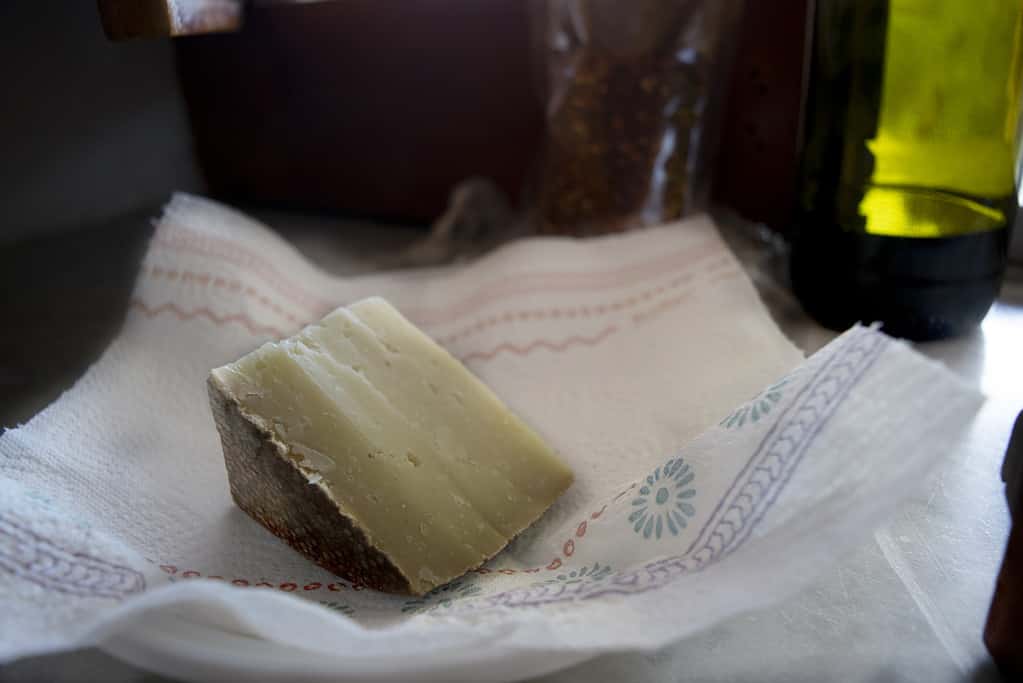
Local firewood, often cork, adds smokiness to fiore sardo after it ages for eight months.
©sal61/iStock via Getty Images
Smoke from local trees adds smokiness to fiore sardo, a pecorino cheese created in Sardinia. The Denominazione di Origine Protetta (DOP) requires all fiore sardo to be locally produced, which means it’s hard to find.
The specialty cheese known as casu martszu introduces maggots to fiore sardo, which causes the cheese to break down and soften as the maggots digest the fats. Many countries, including the U.S., ban the import of casu martszu due to food safety concerns.
Fontina

Fontina cheese melts easily making it a favorite for pizza and lasagna.
©Francesco Marzovillo/iStock via Getty Images
Made from cow’s milk, fontina is a hard cheese that adds a creamy bite to Italian and Italian-American cuisine. While fontina originated in Italy, it’s now made all over the U.S., which makes it easy to find in grocery stores.
This cheese that starts with F has a mild, nutty flavor that pairs well with sweet-tart fruits and vegetables like cherries and tomatoes. A typical fondue mixes fontina with gruyere and gouda. This is a great way to try it for the first time and experience the creamy texture. However, it’s just as enjoyable on a cheese plate with some whole-grain crackers and fresh apples.
Fresh Mozzarella
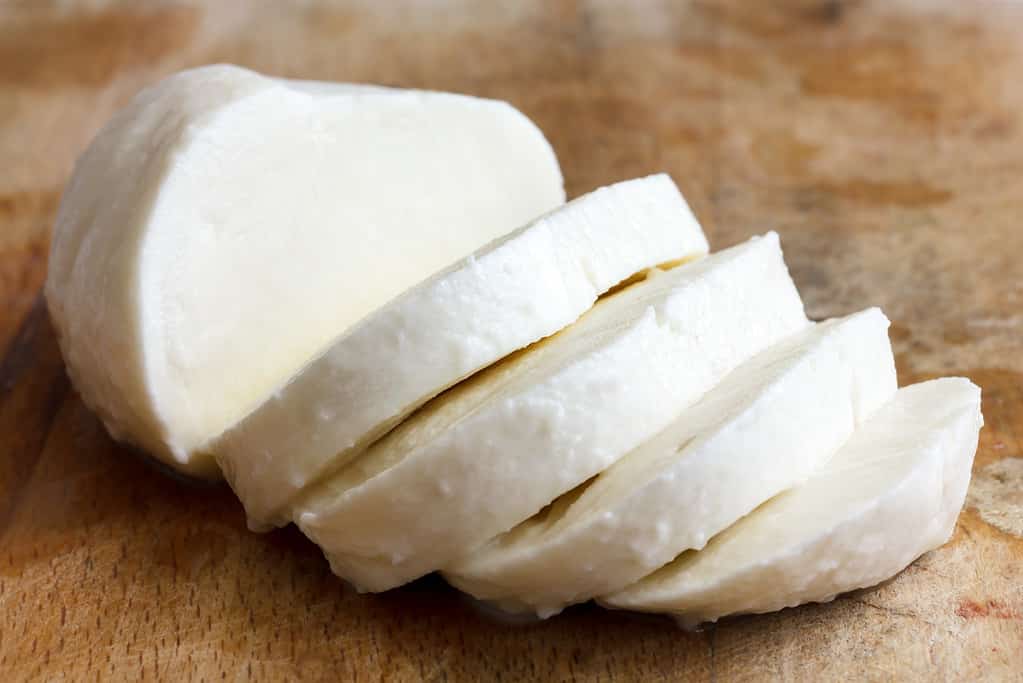
The salty, creamy taste of fresh mozzarella pairs well with many sweet and savory foods.
©etienne voss/iStock via Getty Images
History’s first batches of fresh mozzarella are attributed to Southern Italians who used the milk from Italian buffalo. It’s currently made from any whole-fat milk that’s available, so some cheesemakers use cow’s milk while others use sheep’s milk. The variety of milk does change the flavor slightly, but it’s all tasty.
The milk and cream blend with bacteria and rennet, which creates the curds. After straining the whey from the curds, kneading creates the stretchy mozzarella cheese that’s then shaped into balls, a log, or a braid and refrigerated.
Fresh Ricotta
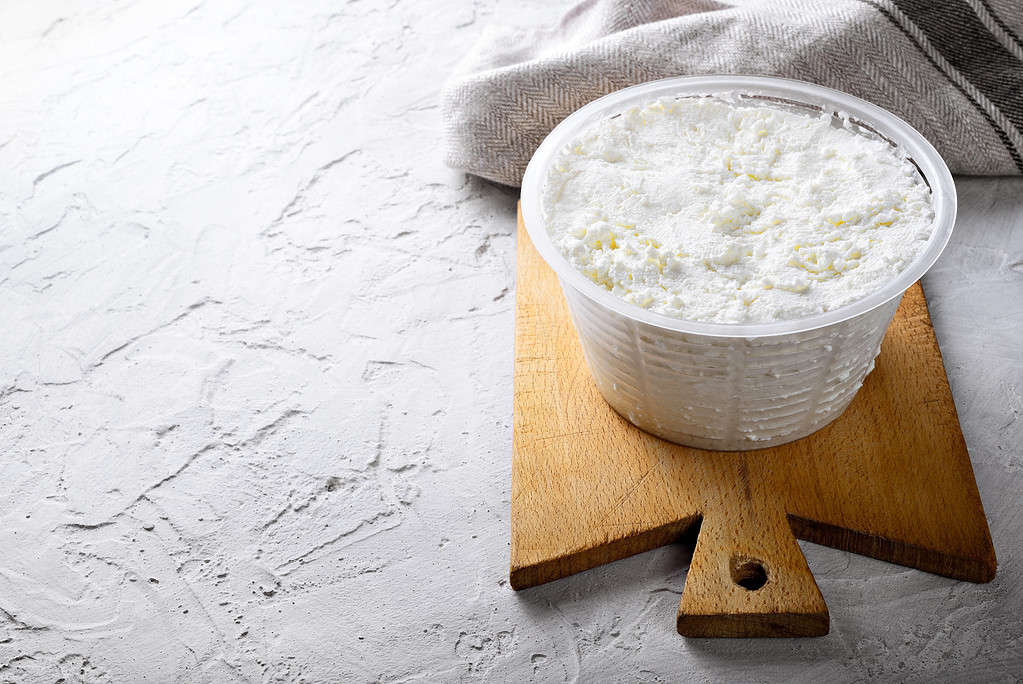
Novice home cooks find fresh ricotta to be the easiest cheese to make in the kitchen.
©fabiomax/iStock via Getty Images
Fresh ricotta takes the ricotta you purchase in tubs and brings it to a new level. It’s a crumbly cheese that’s a must-have for lasagna and homemade ravioli. Traditionally, Italian cooks made ricotta with sheep’s milk. Store-bought versions are more likely to contain cow’s milk.
Heat milk and cream to a specific temperature before adding vinegar or lemon juice, which curdles the mixture. Strain the curds from the mixture and wrap in cheesecloth until needed. PBS shares an easy-to-follow recipe for fresh ricotta that works perfectly.
Fromage Blanc

France’s fromage blanc translates to “white cheese” and provides richness to bread or scones.
©PicturePartners/iStock via Getty Images
Fromage blanc is a mixture of cow’s milk, cultures, and rennet. After mixing those, the milk mixture sits in a heated room that maintains a temperature of 68º F to 74º F. It needs to sit at this temperature range for the curds to separate.
The longer you set fromage blanc, the tangier it gets. This is due to the loss of lactose the longer it sits. If you want a sweeter cheese spread, let it sit no longer than 12 hours to form the curds. If you prefer a tangier, yogurt-like flavor, extend the time it sits to the full recommendation of 14 hours. Drain the curds for up to 12 hours and watch for the ricotta-like consistency. Now’s the time to add salt, plus herbs and spices if you want a savory cheese. Otherwise, leave it plain for a cheese spread that’s great with jam and preserves.
Fynbo

Produced on the island of Fyn, this type of gouda is hard to find without going to specialty cheese stores.
©gaus-nataliya/iStock via Getty Images
The island of Fyn spans about 1,196 square miles off the coast of Denmark, and it’s the country’s third-largest island. It’s also where a specific type of gouda known as fynbo comes from, and this cheese is a regional delicacy. A specific blend of cultures gives this gouda notes of buckwheat.
Fynbo cheese has a fat content upwards of 30%, which adds to the creamy taste and texture. It’s a fantastic cheese to serve on a cheeseboard if you can find it.
| F-Named Cheese | Country of Origin | Milk | Texture | Flavor |
|---|---|---|---|---|
| Farmhouse Cheddar | England | Cow | Hard but crumbly | Sharp |
| Farmer’s Cheese | Uncertain but possibly Germany | Any | Soft but dry | Mild |
| Feta | Greece | Goat or sheep | Soft and crumbly | Salty |
| Filetta | France | Goat or sheep | Soft | Earthy and herbal |
| Fiore Sardo | Italy | Sheep | Hard and grainy | Smoky |
| Fontina | Italy | Cow | Hard | Creamy and nutty |
| Fresh Mozzarella | Italy | Any | Soft | Creamy and mild |
| Fresh Ricotta | Italy | Any | Soft | Creamy and mild |
| Fromage Blanc | France | Any | Soft | Creamy and sweet or tangy |
| Fynbo | Denmark | Cow | Semi-hard | Creamy and mild |
The List of Cheeses That Start With F Keeps Increasing
As cheesemakers continually create new cheese recipes, varieties change often. Here’s a list of other kinds starting with F.
- Faisselle
- Farm Chango
- Farmhouse Gouda
- Fermiere
- Fiaccio
- Fiery Rebel
- Fiesta Cheddar
- Figaro
- Figue
- Fin-de-Siecle
- Finn
- FITAKI White Cheese
- Five Counties
- Flagship Block
- Flor de Guia
- Fondant de Brebis
- Fontiago
- Fontina Val d’Aosta
- Formagella
- Formaggio di Capra
- Formaggio di Grotta
- Forme
- Forsterkase
The photo featured at the top of this post is © Pronina Marina/Shutterstock.com
Thank you for reading! Have some feedback for us? Contact the AZ Animals editorial team.






